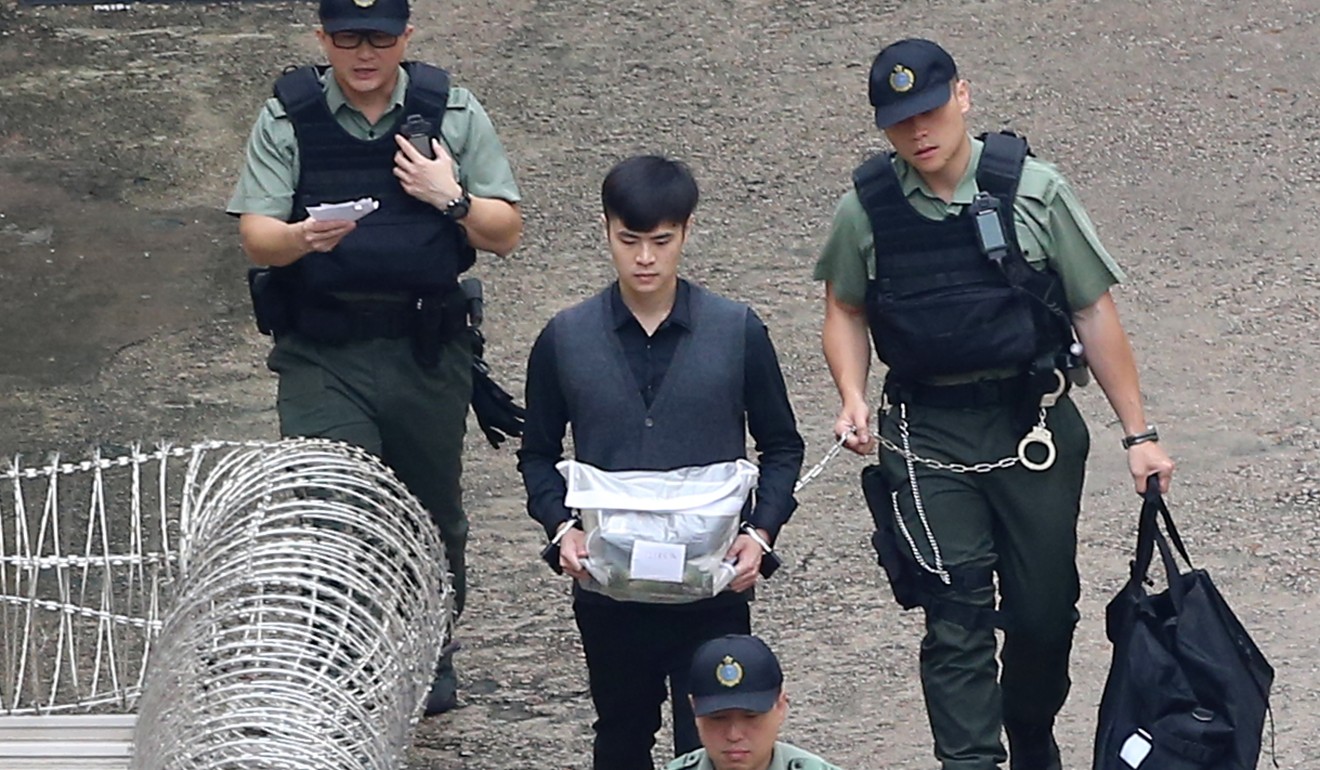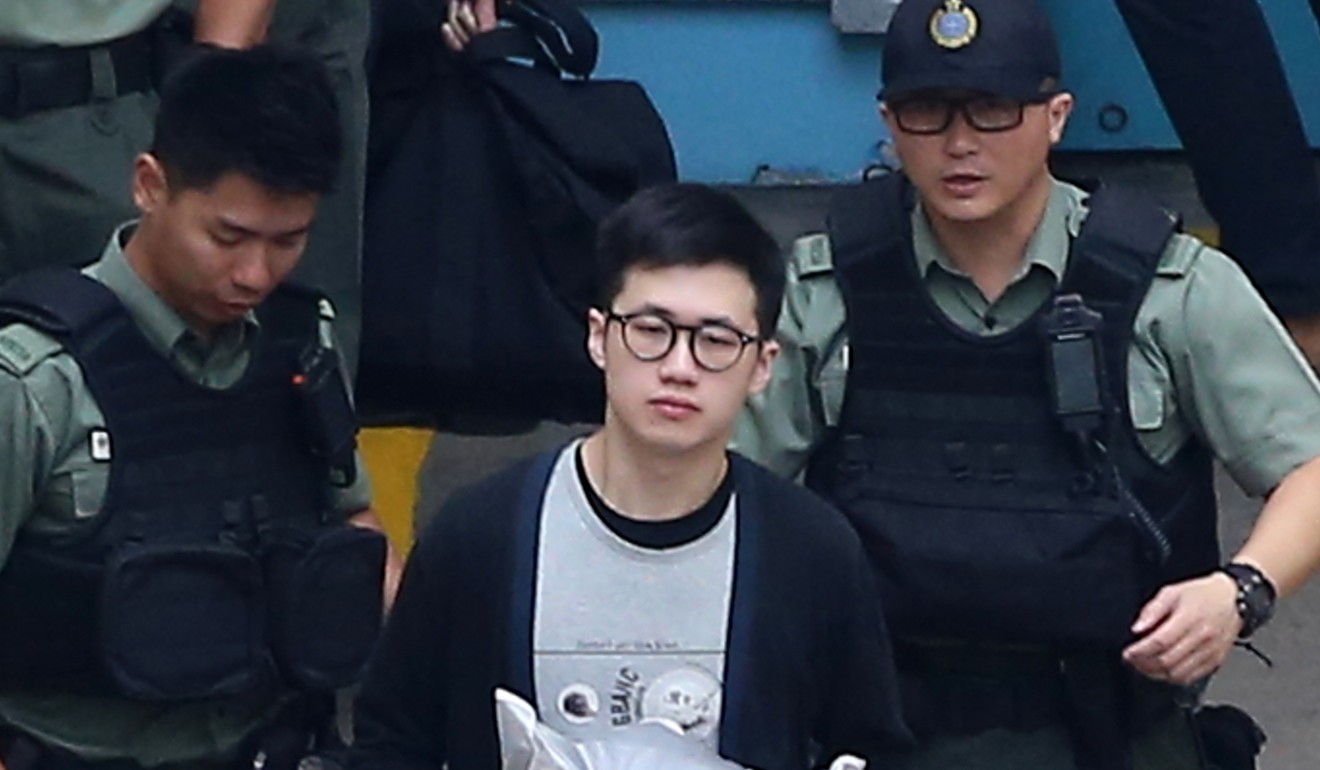
International crime group offering US$20 million to kill Hong Kong man was ‘fantasy’, body-in-cement murder trial hears
Tsang Cheung-yan, one of three defendants, testifies group that placed a bounty on victim Cheung Man-li was a joke that ‘no one thought was true’
The first defendant to take the witness box in Hong Kong’s body-in-cement murder trial told the court on Thursday “no one believed” in an international crime group offering a bounty of US$20 million to kill the victim.
“No one thought it was true,” Tsang, 28, said.
International crime group wanted man killed or dismembered, body-in-cement murder trial hears
Tsang, along with Keith Lau, 23, and Cheung Sin-hang, 26, have pleaded not guilty to murdering Cheung Man-li – known as Ah J – in their Tsuen Wan flat on March 4, 2016.
They pleaded guilty to preventing the lawful burial of a body.
Prosecutors earlier claimed someone attacked 28-year-old Ah J in Flat 9D of the DAN6 industrial building with chloroform, before Tsang injected him with alcohol. They then put the body in a home-made “concrete coffin”.

There was also a “delete record list”, on which each person was given a price tag.
But Tsang said the group was originally called “T.here”, meaning that “T”, Tsang’s nickname, was here.
Tsang said the group was meant to be a joke, adding he also put a price tag on himself.
‘I was under influence of my flatmates’, says man accused of Hong Kong body-in-cement killing
He said the price associated with Ah J was a reflection of his personal worth and financial status.
Tsang accused Lau of floating the idea of robbing Ah J days before his death. The plan, he said, involved knocking Ah J out and taking his money. But Lau never said he would kill anyone, nor did he expect anyone would die.
He initially followed Lau’s suggestion and even went to Kwun Tong Promenade to scout for a site. He gave up on the plan after seeing several surveillance cameras.
Yet he admitted buying chloroform on the morning of March 4, prompting a question from the judge.

“I don’t understand. You disagreed [with the plan] but you were the one who bought things … for the robbery?” Mr Justice Patrick Li Hon-leung said.
Tsang replied he was the one with the money and when Li asked whether he could have lent it to the others, Tsang said: “It’s my habit not to give my money to other people.”
He also said Lau forced him to inject Ah J with a type of alcohol called 151, which contains more than 70 per cent alcohol by volume.
Tsang then told the court how Lau began to look “crazy”.
“From the look in his eyes, it seemed he was asking me to do something so … I just followed what he wanted me to do,” Tsang said.
Body-in-cement murder suspect planned to break into victim’s safe to steal HK$10 million
After Ah J’s death, the three then fled to Taiwan. On April 10, while Lau was out celebrating his birthday, Tsang said he and Cheung decided to surrender themselves to the Taiwanese authorities, but they were arrested before they had a chance.
Lau’s defence counsel, Keith Oderberg, challenged Tsang, saying that as the oldest of the three defendants, he was the one who enjoyed manipulating people.
Tsang said that wasn’t true, but admitted he liked having people dependent on him.
He agreed when Oderberg suggested he would be open to being dishonest in the pursuit of making money.
The court also heard the trio and a fourth flatmate once searched videos about hiding dead bodies, mutilating them and draining their blood. But Tsang said that was part of the fantasy.
Tsang was expected to continue his testimony on Friday.

